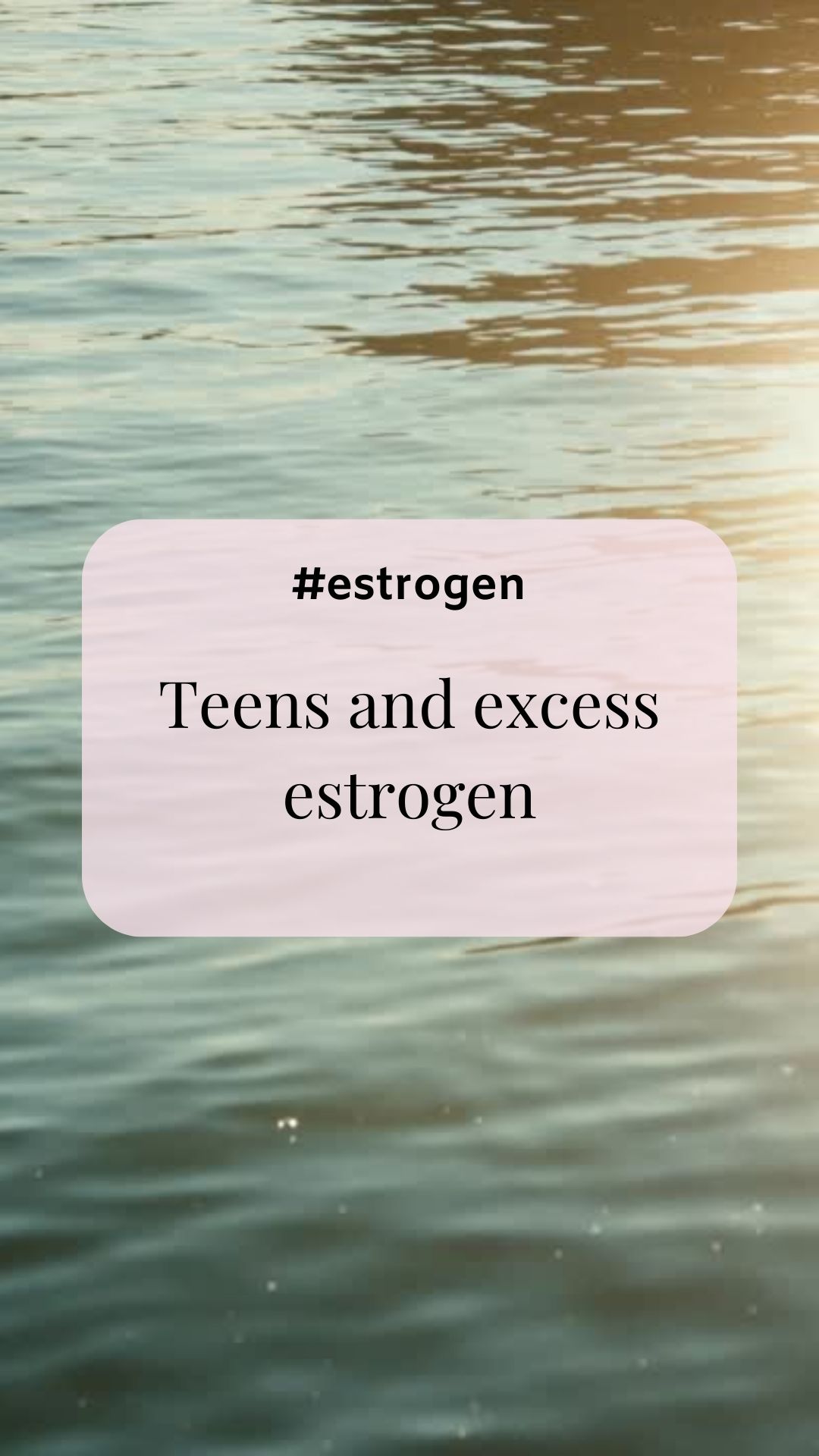
Why do we need to know about excess oestrogen and what can we do about it?
Before we look at excess oestrogen, let’s have an overview of what oestrogen is. We have three kinds of oestrogen, each made in different parts of the body, some are made in the fat cells and adrenal glands, but the most, during our menstruating years are made in the ovaries. This one is called estradiol. This is the queen of all estrogen’s. It’s our happy hormone. It stimulates mood and libido as it boosts serotonin (which promotes feelings of well being and happiness) and dopamine (which is associated with motivation and pleasure). Estrogen also makes us care for others, and if you notice in your own cycle when it’s easier to care for others, and when you find yourself less tolerable, it could well be due to the rise and fall of estrogen.
It also has many other benefits for bones, muscles, brain, heart health, sleep and metabolism. It also enhances sensitivity to insulin, so helps prevent insulin resistance, which is linked to PCOS.
Estrodial is a growth hormone, so as long as its there it’s helping all of the beneficial things grow and be supported. One of it’s main job is to also grow the uterine lining to prepare for a baby. The more estrodial you have, the thicker your uterine lining will be and the heavier your period will be.
On a quick side tangent, if you take the hormonal birth control pill, your ovaries are not making estrogen, as your hormones are essentially shut down. So along with this you are not getting all of the wonderful benefits of estrogen on the things above, which may impact your long term health. Something that we do not get told and is important to consider.
Back to estrogen. During certain times in our menstruating years, it is normal for the balance of estrogen and progesterone to be out. This is in the first few years of having our cycle, and during perimenopause, which could be up to 10 years before our periods eventually stop. The reason for this imbalance is that we are not ovulating each cycle, and therefore not producing progesterone. Progesterone is another essential hormone that is only released once the follicles have released the egg. While progesterones main job is to hold and nourish a pregnancy, it also has a pivotal role in counter balancing estrogen. It helps thin the lining of the uterus, while estrogen thickens it, it helps prevent breast cancer, while estrogen can promote it, it helps boost hormone thyroid while estrogen suppresses it.
The menstrual cycle has been considered the 5th vital sign, and you can see why when getting the balance right or wrong can have real health implications.
So how can we tell when the balance is out? Excess oestrogen has many symptoms. These include:
- Heavy periods
- Breast tenderness
- Cysts
- PMS
- Painful periods
- Endo
- Fibroids
- Menstrual migraines
- Mood swings and irratibilaty
- Moodiness and meltdowns
- Depression
- Weepiness
- Mid cycle pain
- Brain fog
- Weight gain around middle
- Bloating, puffiness or water retention
- Abnormal smears
Remember, it’s the balance of estrogen and progesterone that we want to work out.
Some reasons why this might be occurring
- Anovulatory cycles (common in teen years and perimenopause)
- PCOS
- Poor estrogen detoxification
- Poor diet
- Gut issues, like constipation
- Stress, higher levels or cortisol which competes with progesterone
- Birth control pill
- Environmental toxins, which are all around us. Particularly BPA’s
Another thing to consider with our teens is that our hormone receptors are very new to the sudden influx of hormones and therefore very sensitive to them. Until they get used to the new hormonal flow this can have an impact on how they feel emotionally. Everything is that little bit extra heightened.
There are ways we can address this imbalance, but it’s important to know that all of the symptoms above are not normal and can be addressed for better overall wellbeing. Important to also know that if you are experiencing these things, and have not received the help you need, find another doctor or practitioner who is specialised. As we head into peri, these things can worsen with more hormonal fluctuations, and despite what we’ve been told, we don’t have to put up with it.
Address excess oestrogen through:
- Supporting liver detoxification and gut health. We want to make things as easy as possible to move through us
- Make sure youre getting enough dietary fibre so we can eliminate through the bowels
- Drink plenty of filtered water, again, helping it eliminate through wee
- Make sure you get enough sleep
- Sweat – move your body in a way that sweats
- Eating brocolli, cauli and cabbage helps binds to excess estrogen
- Eating a carrot a day helps live detox
- Track your cycle, notice where and when you experience the symptoms
- Loose excess weight
- Seek assistance from a qualified hormonal specialist
- Look at Vit D, magnesium, selenium and Vit C and B levels,
If your daughter has had her period for a couple of years, and she is still experiencing and of these symptoms, or if any of these is causing her to miss school or be in lots of pain, please don’t wait to have her assessed by a specialist. An integrative practitioner is best. Someone who will look at her diet, lifestyle, health history and overall health to get a full picture and find the cause, rather than treating the symptoms.
